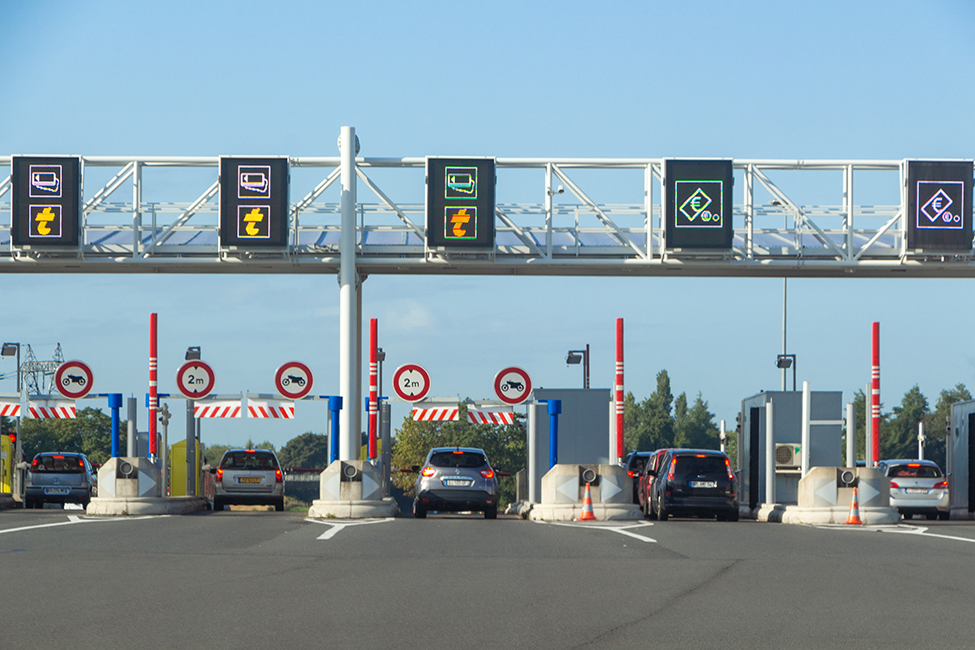How do electronic tolls work?
The European Electronic Toll Service (EETS) is an electronic payment method designed to ensure the fluid passage of motorists and other road users at toll stations. This quick payment method works using a communication system, such as a badge or an electronic box inside the vehicle. The system is fixed to the vehicle’s windscreen and sends a radio signal as soon as the vehicle crosses the entry or exit point of motorways that have toll stations. The box sends an audible signal, then, the traffic light turns to green, and the barrier lifts up without the driver having to do anything at all.
How do you sign up for an electronic toll subscription?
You need to contact one of the motorway concessions companies to get an electronic toll badge. To do so, you can apply directly at the company’s site, by telephone or online. Most motorway companies offer different subscriptions comprising a fixed monthly or annual subscription fee with toll fees added on. After choosing the type of subscription to suit you and signing your electronic toll agreement, as a subscriber, you’ll receive an electronic box and a self-adhesive strip. Then, you need stick the box near the driver’s rear-view mirror. The box covers the entire national motorway network, no matter which company you subscribe to. Every month, subscribers receive a detailed invoice by email or mail. After this, a direct debit is automatically taken from their bank account.
What are the pros of electronic tolls?
Whether you’re driving during the rush hour, at off-peak times or criss-crossing part of the country on holiday, electronic tolls have numerous benefits for both regular and occasional motorway users:
- Substantial time-saving benefits: Thanks to the T lanes reserved for electronic toll subscribers, you can avoid traffic jams and long queues.
- A simplified payment method: You pay automatically by monthly direct debit. Your badge is automatically detected when you join the motorway, meaning that you don’t have to look for a payment method or lower your window to pay. Also, you don’t have to pay the flat rate fee if you lose your toll ticket.
- Potential savings on regular journeys: Some motorway concessions companies offer discounts on specific sections of the motorway, as well as discounts for a certain number of journeys made during a month or a year.
- More freedom when driving: More and more motorway concessions companies offer subscriptions to electronic tolls that extend to cover many European countries.
What are the cons of electronic tolls?
While there are many pros when it comes to electronic tolls, there are also a few cons that are worth mentioning:
- Electronic tolls mean you pay additional charges due to the subscription fee, the cost of the badge and its activation. However, most electronic toll subscriptions state that drivers who’ve signed up only pay the monthly fee when using the motorway.
- Automatic direct debit payments can make managing your budget harder and you may risk a higher bill at the end of the month.
- The popularity of electronic tolling is such that now, toll stations frequently have long queues on T lanes. To manage this issue, more and more motorway networks have systems that allow vehicles to cruise through at around 20 miles per hour. These systems also called free-flowing electronic tolls.
Electronic tolls offer a simple and convenient payment solution for motorway users. However, this service comes at a price and can have an impact on motorists in terms of budget management. This is important to note when signing up to an agreement.
